Balsam 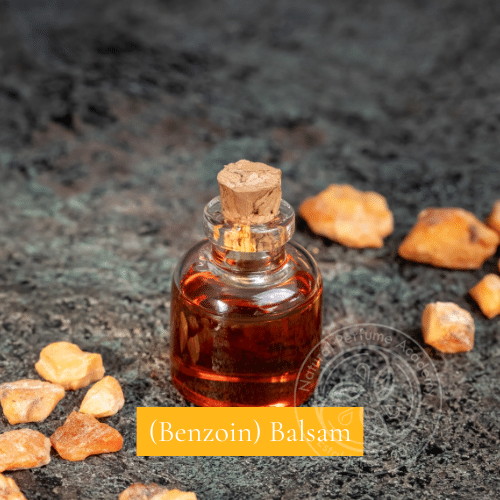
Title: BalsamDescription:
Balsam refers to a natural resinous substance exuded by certain trees and plants. This material can be a physiological product of the plant’s normal growth processes or a pathological product resulting from injury or disease. Balsams are known for their aromatic properties and have been used in perfumery and medicine for centuries. Characteristics: - Appearance: Balsams typically have a viscous, sticky texture and can range in color from golden yellow to dark brown.
- Fragrance Profile: They are renowned for their rich, warm, and sweet aromatic properties, often with notes of vanilla, cinnamon, or honey. The scent can be both soothing and uplifting.
- Composition: Balsams contain a mixture of essential oils, resin acids, and other volatile compounds that contribute to their complex aroma.
Examples of Balsams: - Peru Balsam: Extracted from the Myroxylon balsamum tree, it has a sweet, vanilla-like scent.
- Tolu Balsam: Derived from the Myroxylon balsamum var. pereirae tree, known for its warm, spicy, and cinnamon-like fragrance.
- Benzoin: Obtained from the Styrax benzoin tree, it has a sweet, vanilla, and almond-like aroma.
Country of Origin:
Balsams are typically sourced from tropical and subtropical regions, including Central and South America, Southeast Asia, and parts of Africa. Perfume Type and Combinations: - Usage in Perfumery: Balsams are prized for their fixative properties, helping to stabilize and prolong the life of a perfume’s aroma. They are commonly used in oriental, woody, and amber fragrance compositions.
- Blending: Balsams blend well with other resins, spices, and floral notes. They are often combined with ingredients like vanilla, frankincense, sandalwood, and rose to create rich, complex perfumes.
Applications in Natural Perfumery:
Balsams are valued in natural perfumery for their depth and longevity. They add warmth and sweetness to blends and are used in both top-end luxury perfumes and therapeutic aromatherapy products. Traditional and Medicinal Uses:
Historically, balsams have been used in traditional medicine for their healing properties. They are known for their antiseptic, anti-inflammatory, and soothing effects, making them useful in treating wounds, respiratory issues, and skin conditions. Reference: - Steffen Arctander; Perfume and Flavor Materials of Natural Origin.
|
|
Balsamic 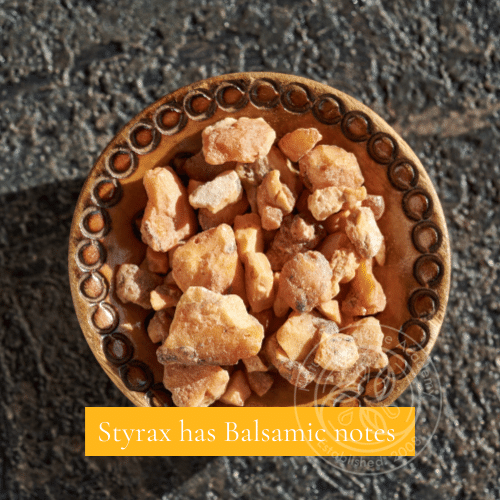
Title: BalsamicDescription:
Balsamic refers to a specific quality of fragrance notes characterized by their sweet, warm, and rich scent profile. These notes are often derived from natural resins and balsams, which exude a comforting and enveloping aroma. Characteristics: - Scent Profile: Sweet, warm, woody, and rich.
- Complexity: Often deep and multifaceted, providing a long-lasting and soothing base for perfumes.
- Aromatic Qualities: Balsamic notes can evoke a sense of warmth and sweetness, often with hints of vanilla, spice, or honey.
Examples of Balsamic Notes: - Tolu Balsam: Known for its warm, spicy, and cinnamon-like aroma.
- Benzoin: Renowned for its sweet, vanilla, and almond-like scent.
- Peru Balsam: Offers a sweet, vanilla-like fragrance.
- Styrax: Provides a sweet, resinous, and slightly leathery note.
Perfume Type and Combinations: - Usage in Perfumery: Balsamic notes are frequently used as base notes in perfumery due to their longevity and ability to anchor a fragrance. They add depth and richness to oriental, woody, and amber compositions.
- Blending: These notes blend exceptionally well with spices, woods, florals, and other resins. Common pairings include ingredients like sandalwood, frankincense, vanilla, and patchouli.
Applications in Natural Perfumery:
Balsamic notes are highly valued in natural perfumery for their ability to provide a rich and enduring foundation to perfumes. They contribute to the overall complexity and depth of a fragrance, making them essential in both luxury and therapeutic blends. Traditional and Cultural Significance:
Balsamic materials have been used throughout history not only in perfumery but also in traditional medicine and rituals. Their soothing and healing properties have made them popular in various cultural practices around the world. Reference: - Steffen Arctander; Perfume and Flavor Materials of Natural Origin.
|
|
Base Notes 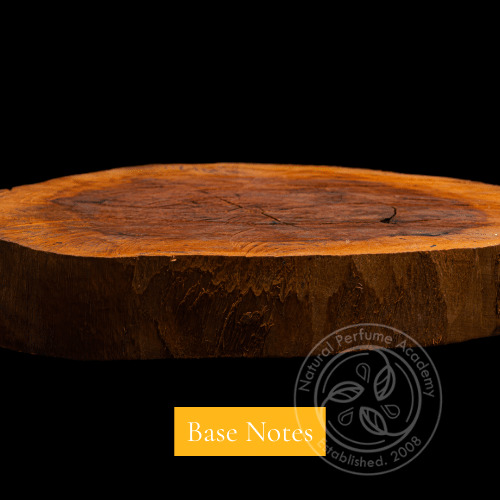
Title: Base NotesDescription:
Base notes form the sturdy foundation of a natural perfume composition, offering depth, richness, and longevity to the fragrance. Derived solely from natural botanical sources, these notes are renowned for their earthy, grounding, and enduring qualities. Characteristics: - Scent Profile: Deep, warm, and persistent, evoking the essence of the earth and forests.
- Longevity: Base notes boast exceptional staying power, lingering on the skin for extended periods.
- Evaporation Rate: Slow, ensuring a gradual release of aroma over time.
Examples of Base Notes (100% Natural): - Woody: Sandalwood, Cedarwood, Vetiver, Patchouli
- Balsamic: Benzoin, Tolu Balsam, Peru Balsam
- Resinous: Frankincense, Myrrh, Labdanum
- Earthy: Oakmoss, Vetiver, Patchouli
- Musk: Ambrette Seed, Angelica Root, Labdanum
- Vanillic: Vanilla Absolute, Tonka Bean
Perfume Type and Combinations: - Usage in Natural Perfumery: Base notes are indispensable in natural perfumery, providing a solid foundation and enhancing the overall complexity of the fragrance. They harmonize beautifully with floral, herbal, and resinous notes, creating well-rounded and captivating scent profiles.
Applications in Natural Perfumery:
In natural perfumery, base notes are prized for their authenticity and purity. Sourced from botanical treasures, these ingredients imbue fragrances with a deep connection to nature. They are meticulously crafted to ensure sustainability and ethical sourcing practices. Role in the Fragrance Pyramid: - Top Notes: Initial, fleeting impressions, often bright and citrusy.
- Middle Notes (Heart Notes): The essence of the fragrance, floral or herbal, unfolding after the top notes dissipate.
- Base Notes: The enduring foundation, grounding the fragrance with their earthy and woody allure, persisting long after the other notes fade.
Cultural and Historical Significance:
Base notes have been revered throughout history for their profound connection to the natural world. Used in ancient rituals, ceremonies, and healing practices, these botanical treasures have stood the test of time, symbolizing resilience, strength, and harmony. Reference: - Steffen Arctander; Perfume and Flavor Materials of Natural Origin.
|
|
Bee goo 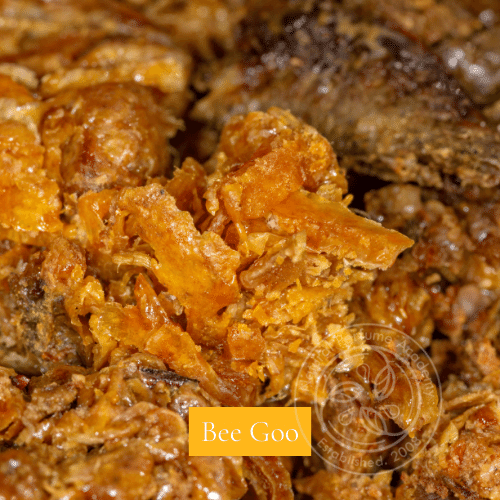
Title: Bee GooDescription:
"Bee Goo" is a colloquial term used in natural perfumery to describe a unique substance derived from the remnants of bee activity within a hive. This material comprises a blend of various hive components, including wax residues, pollen, propolis, and fragments of bees themselves. These remnants are typically collected during the extraction of beeswax from the hive and undergo a maceration process in alcohol. Characteristics: - Composition: A complex amalgamation of natural substances produced by bees within the hive environment.
- Texture: Varies depending on the composition, ranging from viscous and sticky to granular or powdery.
- Aroma: The scent profile of Bee Goo is multifaceted, incorporating elements of beeswax, floral undertones from pollen, and the resinous, balsamic notes of propolis.
- Fixative Properties: Bee Goo exhibits notable fixative qualities, enhancing the longevity and tenacity of fragrances to which it is added.
Preparation and Ageing:
After collection, the raw materials undergo a maceration process in alcohol, allowing for the extraction of aromatic compounds and fixative properties. The duration of maceration is crucial, with Bee Goo typically aged for a minimum of eight months to achieve optimal fixative qualities and aromatic complexity. Usage in Perfumery: - Fixative Agent: Bee Goo is valued in perfumery for its ability to anchor fragrances, extending their longevity and enhancing their overall olfactory profile.
- Natural Essence: As a product of the hive, Bee Goo offers a unique olfactory experience, capturing the essence of bees and their environment in a single substance.
- Artisanal Crafting: Perfumers and artisans often incorporate Bee Goo into natural perfume formulations, adding depth, richness, and authenticity to their creations.
Application:
Bee Goo finds application in various perfumery products, including solid perfumes, balms, and botanical blends. It serves as a natural alternative to synthetic fixatives, aligning with the principles of sustainable and eco-conscious fragrance formulation. Cultural and Historical Significance:
Throughout history, bees and their hive products have held cultural significance, symbolizing industriousness, community, and the bounty of nature. Bee Goo encapsulates this rich heritage, offering perfumers a connection to age-old traditions and the natural world. Reference: - Research and insights from natural perfumery practitioners and artisans.
|
|
Bergamot 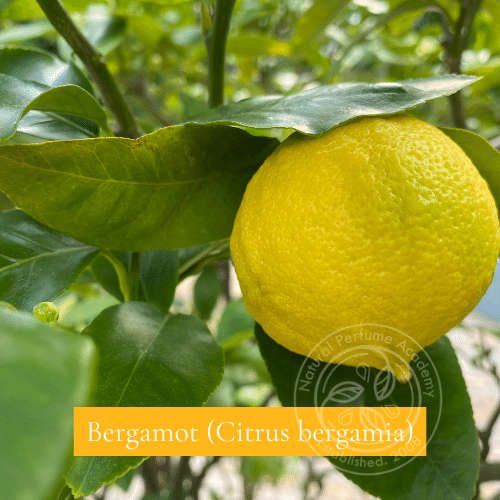
Title: Bergamot (Citrus bergamia)Description:
Bergamot, scientifically known as Citrus bergamia, is a citrus fruit prized in perfumery for its distinctive aroma and versatile applications. The essential oil of bergamot is extracted from the fruit's peel through a cold-pressing method, capturing its vibrant scent profile and therapeutic properties. Characteristics: - Aroma: Bergamot oil is renowned for its fresh, citrusy fragrance, characterized by bright, uplifting notes with a delicate floral undertone.
- Color: The oil typically exhibits a pale greenish-yellow hue, reflecting the color of the bergamot fruit peel.
- Consistency: Bergamot oil possesses a thin, watery consistency, making it easy to blend with other essential oils and carrier oils.
- Chemical Composition: The volatile compounds present in bergamot oil include limonene, linalyl acetate, and bergapten (a psoralen compound responsible for photosensitivity).
Variants: - Standard Bergamot Oil: Traditional bergamot oil contains natural levels of bergapten, a photosensitizing compound that can cause skin pigmentation and increased sensitivity to sunlight. While prized for its aroma, bergapten poses risks when applied to the skin before sun exposure.
- Bergapten-Free Bergamot Oil: In response to safety concerns, bergamot oil variants with reduced or eliminated levels of bergapten have been developed. These "bergapten-free" or "FCF" (furanocoumarin-free) bergamot oils offer the same aromatic profile without the associated photosensitizing effects, making them safer for topical use.
Usage in Perfumery: - Top Note: Bergamot oil is often used as a top note in perfume compositions, contributing its bright, citrusy aroma to blends.
- Blending: Its versatile nature allows bergamot oil to harmonize with a wide range of other essential oils, including floral, woody, and herbal notes.
- Freshness: Bergamot's refreshing scent adds a vibrant, invigorating quality to fragrances, making it a popular choice for citrus-based and unisex perfumes.
- Aromatherapy: Beyond perfumery, bergamot oil is valued in aromatherapy for its mood-enhancing and stress-relieving properties, promoting relaxation and emotional balance.
Safety Considerations: - Photosensitivity: Standard bergamot oil containing bergapten can cause skin sensitivity and pigmentation when exposed to sunlight. It is recommended to avoid applying bergamot oil to the skin before sun exposure.
- Patch Testing: Prior to topical application, it is advisable to perform a patch test to assess individual sensitivity to bergamot oil, especially in formulations containing bergapten.
References: - Essential oil analysis and safety guidelines based on industry standards and scientific literature.
- Research on bergamot oil variants and their applications in perfumery and aromatherapy.
|
|
Bitter orange 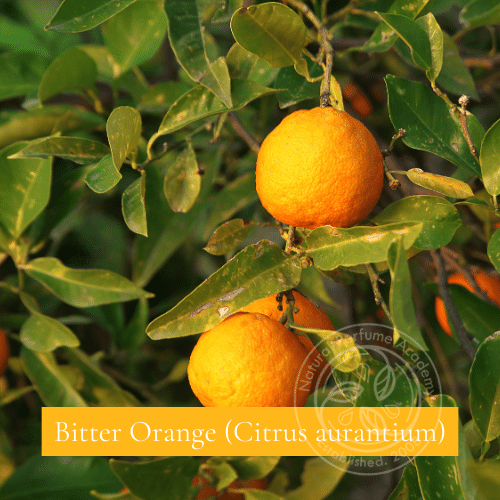
Title: Bitter Orange (Citrus aurantium)Description:
Bitter orange, scientifically known as Citrus aurantium, is a citrus fruit prized for its aromatic peel and diverse applications in perfumery, culinary arts, and traditional medicine. Unlike sweet orange varieties, bitter orange is characterized by its distinctly tart flavor and aromatic zest. Characteristics: - Fruit: Bitter orange fruit resembles its sweet counterpart in appearance, with a rough, textured peel that ranges from yellow-orange to deep orange hues.
- Aroma: The essential oil extracted from bitter orange peel exhibits a complex aroma, blending citrusy, floral, and slightly bitter notes with a refreshing zestiness.
- Color: Bitter orange essential oil typically possesses a pale to golden yellow color, reflecting the hue of the fruit's peel.
- Consistency: The oil has a thin, watery consistency, allowing for easy blending with other essential oils and carriers.
Chemical Composition: - Bitter orange essential oil contains various volatile compounds, including limonene, linalool, and citral, which contribute to its distinctive fragrance and therapeutic properties.
Usage in Perfumery: - Top Note: Bitter orange oil is commonly used as a top note in perfume formulations, imparting its vibrant, citrusy aroma to blends.
- Versatility: Its versatile nature allows it to complement a wide range of fragrance families, including citrus, floral, oriental, and woody compositions.
- Freshness: Bitter orange adds a bright, refreshing quality to perfumes, enhancing their overall freshness and vitality.
- Blending: It harmonizes well with other citrus oils, floral absolutes, spice oils, and woody essences, offering perfumers endless creative possibilities.
Culinary and Medicinal Uses: - Bitter orange peel is used in culinary applications to flavor foods and beverages, imparting a tangy, citrusy taste to dishes, marmalades, and liqueurs.
- In traditional medicine, bitter orange extracts are valued for their digestive, anti-inflammatory, and appetite-stimulating properties, often used in herbal remedies and dietary supplements.
Safety Considerations: - Bitter orange essential oil is generally considered safe for topical use when properly diluted; however, it may cause skin sensitivity in some individuals, particularly when applied undiluted or in high concentrations.
- As with all essential oils, it is recommended to perform a patch test before widespread use to assess individual sensitivity.
References: - Essential oil analysis and safety guidelines based on industry standards and scientific literature.
- Research on the aromatic profile, chemical composition, and therapeutic properties of bitter orange essential oil.
|
|
Body 
Title: BodyDefinition:
In perfumery, "body" refers to the underlying strength, fullness, and substance of a fragrance composition. It denotes the robustness and persistence of the scent on the skin or in the air, contributing to the overall richness and depth of the olfactory experience. Characteristics: - Strength: Body in a fragrance indicates its intensity and potency, with stronger-bodied scents possessing a more pronounced and enduring presence.
- Fullness: Fragrances with body exhibit a satisfying fullness and roundness in their aroma profile, lacking any sense of thinness or insubstantiality.
- Persistence: The body of a fragrance influences its longevity, with scents characterized by a strong body typically lasting longer on the skin and retaining their olfactory impact over time.
Factors Influencing Body: - Concentration: The concentration of aromatic ingredients in a fragrance formulation directly impacts its body, with higher concentrations resulting in greater richness and depth.
- Ingredients: Certain fragrance ingredients, such as resins, woods, and base notes, contribute to the body of a scent by imparting depth, warmth, and longevity to the composition.
- Blending Technique: Skillful blending techniques, including layering, maceration, and aging, can enhance the body of a fragrance by allowing its components to meld and harmonize over time, resulting in a more cohesive and robust olfactory profile.
Importance of Body: - Body is a crucial aspect of fragrance quality, influencing the overall sensory experience and perceived value of a scent. Fragrances with body are often perceived as more luxurious, sophisticated, and enduring, appealing to discerning consumers seeking high-quality olfactory experiences.
Usage in Perfumery: - Perfumers and fragrance enthusiasts use the term "body" to describe the substantive and enduring nature of a scent, evaluating its strength, depth, and persistence as key indicators of fragrance quality and character.
Examples: - Fragrances with a strong body, such as rich oriental blends or deep woody compositions, are favored for their ability to leave a lasting impression and evoke a sense of elegance and sophistication.
- Perfumers often employ ingredients known for their body-enhancing properties, such as amber, patchouli, and oud, to create fragrances with depth and substance.
Significance: - Understanding and enhancing the body of a fragrance is essential for perfumers seeking to create captivating and memorable scents that resonate with consumers and stand out in a competitive market.
|
|
Boronia
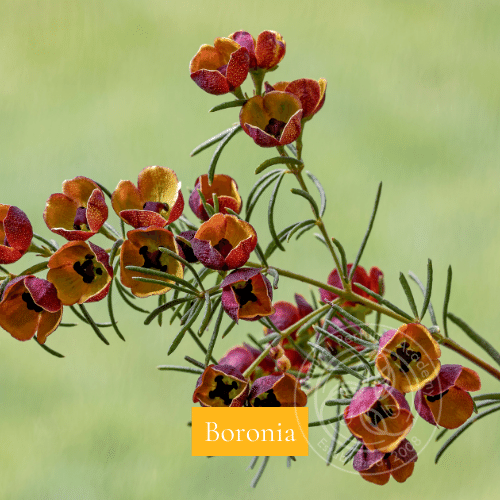
Title: BoroniaDescription:
Boronia, known for its captivating fragrance and distinctive brown cup-shaped flowers, is a genus of flowering plants native to Australia. With approximately 95 species, Boronia encompasses a variety of aromatic plants prized for their intense perfume and ornamental value. Species and Fragrance: - Boronia Megastigma: Among the species, Boronia megastigma stands out for its exceptionally fragrant blooms, which are highly valued in flower arrangements and perfumery. The flowers, characterized by their brown hue and yellow interiors, exude a potent and alluring aroma that adds depth and complexity to fragrant compositions.
Extraction Process: - In perfumery, Boronia flowers are meticulously harvested and subjected to solvent extraction to obtain a concentrated aromatic material known as Boronia concrete. This concrete undergoes further extraction with alcohol to yield Boronia absolute, a prized aromatic ingredient cherished for its exquisite scent and versatility in perfumery.
Characteristics of Boronia Absolute: - Appearance: Boronia absolute typically presents as a semi-liquid substance with a dark green hue, reflecting the rich botanical compounds extracted from the flowers.
- Aroma: The absolute emanates a fruity and tea-like fragrance with floral undertones, evoking sensations of warmth, sweetness, and sophistication.
- Versatility: Renowned for its complex and multifaceted aroma, Boronia absolute finds widespread application in natural perfumery, where it harmonizes beautifully with various floral, fruity, and woody notes.
Usage in Perfumery: - Base Formulations: Boronia absolute serves as a valuable ingredient in base formulations, lending depth, richness, and a naturalistic quality to perfumes.
- Pairing: It complements and enhances the olfactory profile of fragrances featuring mimosa, violet, and honeysuckle, creating captivating scent combinations with nuanced floral nuances.
Cultural Significance: - Boronia holds cultural significance in Australia, where it is admired for its aesthetic appeal and aromatic allure, often featured in bouquets, floral displays, and botanical gardens.
References: - Botanical literature on Boronia species, emphasizing their fragrance, morphology, and cultivation.
- Perfumery textbooks and industry publications detailing the extraction process and olfactory characteristics of Boronia absolute.
- Insights from experienced perfumers and fragrance enthusiasts regarding the versatile applications of Boronia in perfumery formulations.
|
|
Bottom Notes 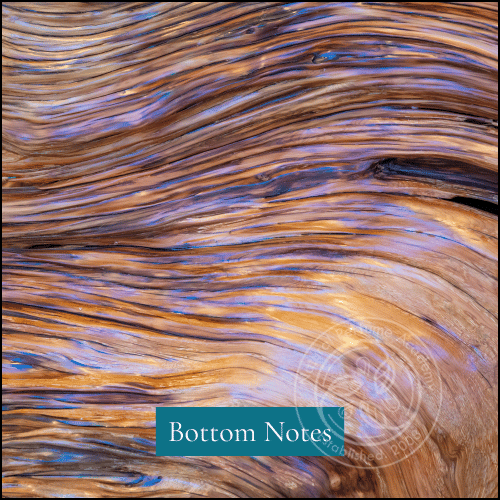
Title: Bottom Notes
Definition:
In perfumery, "bottom notes" refer to the foundational elements of a fragrance composition that emerge gradually during the dry-down phase and persist the longest on the skin. Also known as base notes, they form the enduring and lingering essence of a scent, providing depth, richness, and stability to the overall olfactory profile. Characteristics: - Tenacity: Bottom notes are characterized by their resilience and longevity, lingering on the skin for hours or even days after the application of a fragrance.
- Depth: These notes contribute to the depth and complexity of a scent, anchoring the composition with their rich and substantive aroma.
- Warmth: Bottom notes often exude warm, comforting, and enveloping qualities, adding a sense of depth and sensuality to the fragrance experience.
Role in Perfumery: - Structural Foundation: Bottom notes serve as the structural foundation of a fragrance, providing stability and coherence to the overall composition. They anchor the lighter top and middle notes, ensuring a harmonious and well-balanced olfactory experience.
- Longevity: Due to their tenacious nature, bottom notes play a crucial role in determining the longevity and persistence of a fragrance, extending its wear time and enhancing its overall impact.
- Emotional Resonance: The deep, resonant qualities of bottom notes evoke feelings of warmth, comfort, and intimacy, creating a lasting emotional connection with the wearer.
Examples of Bottom Notes: - Rich Woods: Ingredients such as sandalwood, cedarwood, and vetiver are classic bottom notes prized for their depth, warmth, and longevity.
- Resinous Accords: Resins such as benzoin, myrrh, and labdanum impart a deep, balsamic quality to fragrances, enhancing their longevity and complexity.
- Animalic Notes: Animalic ingredients like musk and ambergris add a sensual, musky undertone to fragrances, contributing to their depth and allure.
Usage in Perfumery: - Perfumers carefully select and blend bottom notes to create fragrances with enduring appeal and longevity. These notes are often added in higher concentrations to ensure their prominent presence in the dry-down phase.
- Consumers appreciate bottom notes for their ability to evoke a sense of luxury, sophistication, and comfort, making them sought-after ingredients in fine fragrances and perfumes.
Significance: - Understanding the role of bottom notes is essential for perfumers seeking to create well-balanced and long-lasting fragrances that resonate with consumers. By mastering the art of layering and blending bottom notes, perfumers can craft memorable scents that leave a lasting impression.
|
|
Bouquet
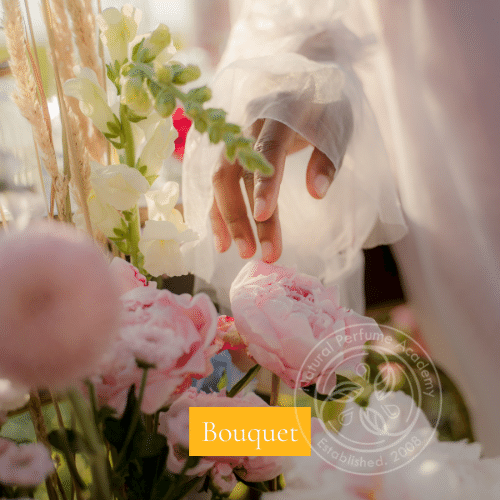
Title: BouquetDefinition: In perfumery, a bouquet refers to a harmonious blend of flower essences, traditionally used to create rich and complex floral compositions. Historical Context: The term is often associated with pre-modern perfumery, where natural botanical extracts were the primary ingredients in crafting luxurious scents. Characteristics: A bouquet composition is marked by the intricate layering of multiple floral notes, each contributing its unique aroma. Common flowers used include rose, jasmine, and violet. Usage in Natural Perfumery: Bouquets are prized for their depth and complexity. They serve as the foundation for many traditional and contemporary natural perfumes, highlighting the beauty and richness of floral extracts. Examples: Classic examples of bouquet compositions often evoke images of lush, blooming gardens and are used to create perfumes that are both elegant and sophisticated.
|
|












